
For Services Rendered is a play by Somerset Maugham. First performed in London in 1932, the play is about the effects of World War I on an English family.

For Services Rendered is a play by Somerset Maugham. First performed in London in 1932, the play is about the effects of World War I on an English family.
Set in late summer 1932 in Kent, the Ardsley family seem to be managing their lives very well following World War One and the Great Depression. In reality, each of them is fighting for survival. Leonard and Charlotte Ardsley are parents to Ethel, Eva, Sydney and Lois.
Ethel is married to a former officer, Howard Bartlett, who returns to his position as a tenant farmer after the war. His class is a source of disharmony between Ethel’s family and her husband. Howard drinks excessively and he attempts to seduce his wife’s younger sister, Lois. Although Ethel is disillusioned, she finds solace in her children. Her marriage disproves the expectation that the war would bring about better social mobility.
Sydney has been blinded in the war; his main occupation now is sitting in a chair whilst knitting. It is Sydney who speaks directly about the madness of war and its devastating effects upon his generation.
Eva is unmarried and approaching forty, martyring herself to the cause of brother, Sydney. Collie Stratton, after a lengthy period serving his country in the Navy, has invested in a motorcar repair shop. However, a naval career has left him ill-prepared to run a business and this proves his undoing. Not realizing it would be illegal, and thinking that it would buy him time to solve his cash-flow problems, Collie writes cheques to creditors despite knowing that his bank will refuse to cash them. Leonard Ardsley informs him he has broken the law and that he will be tried and imprisoned. Eva, who is in love with Collie, proposes to give him money she has saved in order to clear his debts. She asks him to become engaged to her so that he can accept the gift. Collie refuses. Facing prison and disgrace he shoots himself. On hearing of his suicide, Eva holds her family responsible because none of them offered help or support. She pretends to have been engaged to Collie. By the end of the play, Eva has entered into a delusional state, believing truly that she will soon be leaving with her fiancé, Collie.
Lois, at twenty-seven years old, is single and without a hope of finding a husband in the English backwater in which the family live. She is however receiving attention from the married Wilfred Cedar. Wilfred’s wife, Gwen, is tortured by his attraction to Lois. She sees Lois wearing a pearl necklace and despite assurances by Lois that the pearls are fake, she realises that her own husband has gifted the pearls to Lois. Gwen’s fears are later realised when, listening in on the telephone, she hears Lois agreeing to run away with Wilfred. She confronts Lois in the presence of Lois’s mother and sister and pleads with Lois to give up Wilfred, accusing all the family (who defend Lois) of wishing to bring Wilfred’s money into their family. Lois decides to keep to her plan despite Gwen's pleas, and despite the scandal it will cause, not because she loves Wilfred, but because she enjoys the power she has over Wilfred and the way she can exploit him in order to achieve material security and independence from the family.
The younger generation can no longer live their lives in the blueprint of the older generation, they must find a new way of living. England is changing, falling apart, and must begin again. Charlotte is diagnosed by her doctor brother, Charles Prentice as having an unnamed condition, probably cancer, which requires an operation and home care in order to prolong her life. Charlotte refuses treatment so that her family are not burdened with the expense but also because she feels a sense of liberation and self-possession in deciding her fate for herself. ‘I’m rather relieved to think it’s over. I’m not at home in this world of today. I’m pre-War. Everything’s so changed now. To me life is like a party that was very nice to start with but has become rather rowdy as time went on and I’m not at all sorry to go home.’
Leonard, who is oblivious to the true states of any of the members of his family ends the play with a cup of tea and a blithely optimistic speech about the future, ‘If you come to think of it we none of us have anything very much to worry about. We have our health, we have our happiness, and things haven’t been going too well lately, but I think the world is turning the corner and we can all look forward to better times in the future. This old England of ours isn’t done yet and I for one believe in it and all it stands for.’ Delusional Eva sings God Save Our King and the curtain falls.
The first performance was on 1 November 1932 in the West End of London, at the Globe Theatre (later renamed the Gielgud Theatre). [1] The cast was:
The director was Barry Jackson. [3] The play's run at the Globe finished on 17 December 1932, and it transferred to the Queen's Theatre from 2 January 1933. [4]
One of the earliest revivals of this play was the performances in 1946 at the New Lindsey Theatre in London, directed by Peter Cotes. [4] A TV adaptation (from Granada Television, directed by Henry Kaplan) was broadcast in 1959. [5] The later revivals of this play include performances at the Northcott Theatre in 1974, [3] performances at the Royal National Theatre in London in 1979, [6] and performances at the Old Vic Theatre in London in 1993. [1] The 1993 revival, initially performed at the Salisbury Playhouse, was presented by Deborah Paige, and the cast included Sylvia Syms and Jeffrey Segal. [7] More recent revivals were performed at the Watermill Theatre in Berkshire in 2007, [8] the Union Theatre in 2011, [9] and the Chichester Festival Theatre in 2015. [10] A new performance for the London stage is at Jermyn Street Theatre from 6 September to 5 October 2019. [11]
The anti-war message was not popular with audiences, and the play only ran for 78 performances. The play is mentioned in the context of other plays inspired by the Great War in "A Wounded Stage: Drama and World War I", a 2006 book chapter by Mary Luckhurst, [12] and in British Theatre between the Wars, 1918–1939 (2000) by Clive Barker. [3] In the latter, Barker calls the play a "masterpiece of textured dramaturgy", while noting that it was a "categorical failure". [3] For Services Rendered is compared to contemporary plays in Modern British Drama: The Twentieth Century (2002) by Christopher D. Innes, where Innes says the play was "a counterblast to Noel Coward's Cavalcade ". [13] ‘The play is particularly extraordinary viewed in retrospect as the lessons of World War One are written so clearly across the lives of the characters who, less than a decade later, would find themselves at war again.’ [14]
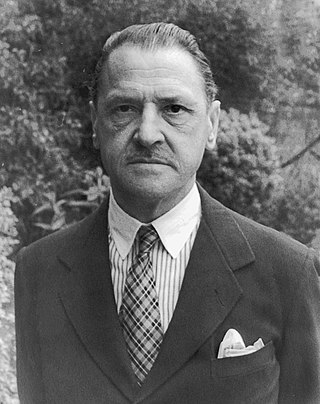
William Somerset Maugham was an English writer, known for his plays, novels and short stories. Born in Paris, where he spent his first ten years, Maugham was schooled in England and went to a German university. He became a medical student in London and qualified as a physician in 1897. He never practised medicine, and became a full-time writer. His first novel, Liza of Lambeth (1897), a study of life in the slums, attracted attention, but it was as a playwright that he first achieved national celebrity. By 1908 he had four plays running at once in the West End of London. He wrote his 32nd and last play in 1933, after which he abandoned the theatre and concentrated on novels and short stories.
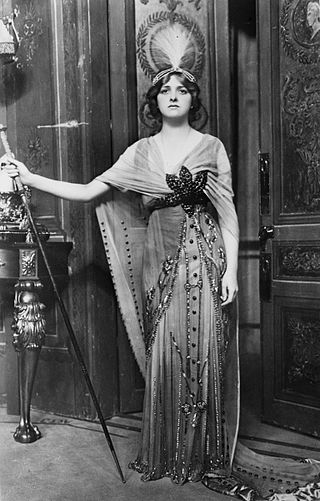
Dame Gladys Constance Cooper, was an English actress, theatrical manager and producer, whose career spanned seven decades on stage, in films and on television.

Ethel Barrymore was an American actress and a member of the Barrymore family of actors. Barrymore was a stage, screen and radio actress whose career spanned six decades, and was regarded as "The First Lady of the American Theatre". She received four nominations for the Academy Award for Best Supporting Actress, winning for None but the Lonely Heart (1944).

Eva Moore was an English actress. Her career on stage and in film spanned six decades, and she was active in the women's suffrage movement. In her 1923 book of reminiscences, Exits and Entrances, she describes approximately ninety of her roles in plays, but she continued to act on stage until 1945. She also acted in more than two dozen films. Her daughter, Jill Esmond, was the first wife of Laurence Olivier.
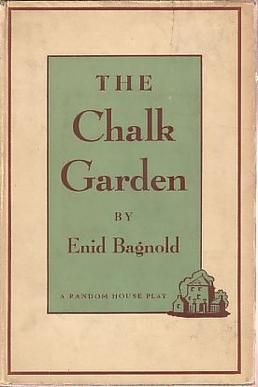
The Chalk Garden is a play by Enid Bagnold that premiered in the US in 1955 and was produced in Britain the following year. It tells the story of the imperious Mrs St Maugham and her granddaughter Laurel, a disturbed child under the care of Miss Madrigal, a governess, whose past life is a mystery that is solved during the action of the play. The work has been revived numerous times internationally, and was adapted for the cinema in 1964.

The Constant Wife, a play written in 1926 by W. Somerset Maugham, is a comedy whose modern and amusing take on marriage and infidelity gives a quick-witted, alternative view on how to deal with an extramarital affair.
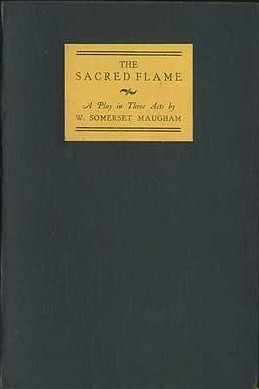
The Sacred Flame (1928) is William Somerset Maugham's 21st play, written at the age of 54. Maugham dedicated the publication to his friend Messmore Kendall.
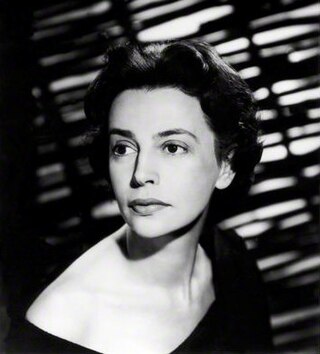
Gwendoline Watford, professionally known after the mid-1950s as Gwen Watford, was an English actress.

The Letter is a 1927 play by W. Somerset Maugham, dramatised from a short story that first appeared in his 1926 collection The Casuarina Tree. The story was inspired by the real-life Ethel Proudlock case which involved the wife of the headmaster of Victoria Institution in Kuala Lumpur who was convicted in a murder trial after shooting dead a male friend in April 1911. She was eventually pardoned.
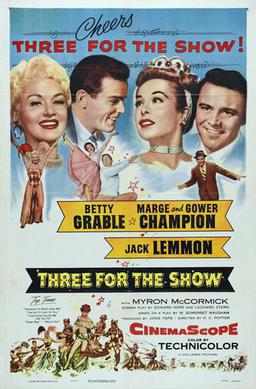
Three for the Show is a 1955 Technicolor and in CinemaScope musical comedy remake of Too Many Husbands. It stars actress Betty Grable, in her last musical, opposite Jack Lemmon, Gower Champion and Marge Champion. It is based on the 1919 play Home and Beauty by W. Somerset Maugham, which was retitled to Too Many Husbands when it came to New York.

Lottie Venne was a British comedian, actress and singer of the Victorian and Edwardian eras, who enjoyed a theatre career spanning five decades. Venne began her stage career in musical burlesque before moving into farce and comedy. She appeared in several works by each of F. C. Burnand and W. S. Gilbert and was often in plays with Charles Hawtrey later in her career.
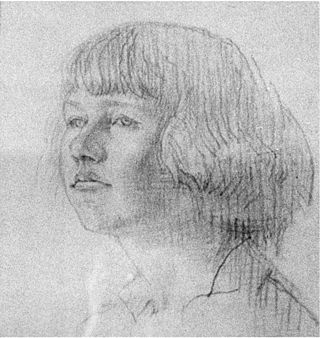
Marda "Scrappy" Vanne was a South African actress who found fame in London.
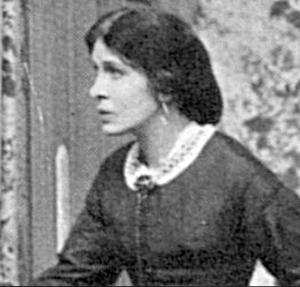
Louise Hampton was a British actress. Although her career began when she was a child, it was for "the pathos and dignity of her elderly, motherly roles" that she was best known.

Margaret Bannerman was a Canadian actress. She is known for her work in the English films The Gay Lord Quex, Lady Audley's Secret and Hindle Wakes. She had a successful career on stage, appearing in revues and light comedy.

Joan Sterndale-Bennett was a British stage and film actress, best known as a character comedian for her work at the Players' Theatre in London.

"Rain" is a short story by the British writer W. Somerset Maugham. It was originally published as "Miss Thompson" in the April 1921 issue of the American literary magazine The Smart Set, and was included in the collection of stories by Maugham The Trembling of a Leaf.

Lady Frederick is a comedy by the British writer W. Somerset Maugham, written early in his career. The play was first seen in London in 1907, and was very successful, running for 422 performances. The title role was played by Ethel Irving. In New York it was first performed in 1908, with Lady Frederick played by Ethel Barrymore, who reprised her role in the play's film adaptation, The Divorcee.
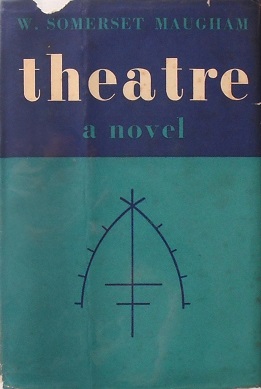
Theatre is a novel by the British writer W. Somerset Maugham, first published in 1937 by William Heinemann (UK) and Doubleday Doran (US).
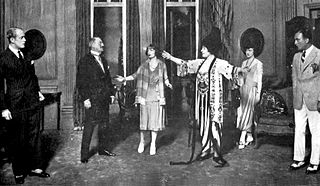
The Circle: a Comedy in Three Acts is a play by W. Somerset Maugham. It was first produced at the Haymarket Theatre, London on 3 March 1921, and has been revived several times in the West End and on Broadway.

Yvonne (Fifi) Banvard was an Australian actress. As a child, she toured North America and gained notoriety as a talented tragedienne. She later went onto perform and produce plays, dramas, comedies and romances across Australia, as well as becoming a radio personality.